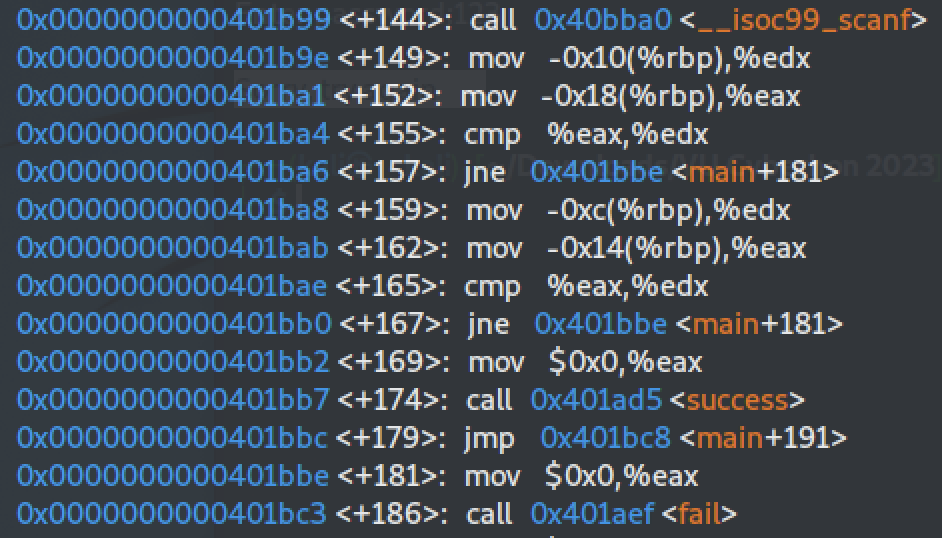Task: Reverse Me (Hard)
This challenge was very similar with the Reverse Me (Easy) task and can be solved in the same way, even though the easy one was awarded with 50pts while the hard one with 250pts (🤔). Perhaps the biggest difference was that this binary (Task-ReverseME-hard) was statically compiled. We can see that using the file command:

The code from the shared libraries is included within the binary, and that’s why it’s over 60 times larger than the Reverse Me (Easy) task binary:

It’s an ELF executable (Executable and Linkable Format) which means it can be run in Unix-like operatng systems. Another important information is that it’s not stripped, so we could search for interesting symbols.
When we run it, it asks for login and password information. Our goal is to find them since the flag is in the form of VU{user,password}.
After disassembling the binary using objdump we can identify the functions
-
succesat address0x401ad5and -
failat address0x401aef
which are being called after the check of the credentials, depending their validation result.


Let’s have a more dynamic approach than what we did in Reverse Me (Easy) task. We are going to run the binary using a debugger, gdb:

We set a breakpoint at the main function, we run the program and then we disassemble:


We then set two additional breakpoints at each cmp (compare) instruction. We continue execution and we are prompted for login and password input. We give two random numbers, 1234 and 4321:

We continue execution and we reach the breakpoint at the first cmp instruction which compares registers $eax and $edx. The $eax register holds our input, while the $edx register is the expected value. We can inspect both by typing info registers eax edx. We see that the expected login value is 2018.

If we contnue the execution the program will output “Sorry, try again” and exit, because the comparison is false. We can change the value of $eax to the expected one (2018) by typing set $eax=2018. Or we can just run from the start and give the correct login value.

Next, we can similarly find the password value by inspecting the values of $eax and $edx at the second comparison:

According to the task description the answer format was like VU{user,password}, so the flag is: VU{2018,3158}